Image Processing Tool Quantifying Auto-Tempered Carbides in As-Quenched Low Carbon Martensitic Steels
Abstract
1. Introduction
2. Materials and Methods
- (a)
- A SEM micrograph from the region of interest containing precipitates is selected, e.g., as shown in Figure 1a.
- (b)
- Binarization technique is used to convert the image into black and white pixels, as shown in Figure 1b.
- (c)
- The grain and lath boundaries are larger than the carbide precipitates. These features can be removed from the image by applying an appropriate threshold number of pixels, so that features which represent low-angle or high-angle grain boundaries are discriminated and removed from the image, as shown in Figure 1c. The resultant image comprising of groups of pixels that are smaller than the threshold value shows the precipitates, Figure 1d. While the lath and grain boundaries were long thin features, the precipitates were small and roughly elliptical. Distinguishing the precipitates from the other features was based on a two-staged approach. In the first stage, large features were perished, which removes majority of the grain and lath boundaries. The remaining features were mainly the precipitates and some portions of the grain boundaries that were not extracted as coherent features due to the limitations of the image resolution. Therefore, in the second stage, the ratios of the lengths of the major and minor axes of the features were calculated and all the features with a ratio larger than a specified threshold (30 pixels) were deleted as lath or grain boundaries.
- (d)
- The image of the precipitates were further processed by dividing it into a matrix of equi-sized boxes (100 by 100 boxes). The ratio of white pixels to the total number of pixels in each box was calculated, and depending on the ratio, the region was designated a particular color indicating the local area fraction of auto-tempered carbides, as shown in Figure 2. The highly auto-tempered regions (yellow) were designated as those in which the apparent area fraction of the auto-tempered carbides within a given box exceeded 10%. The regions showing a low local area fraction of auto-tempered carbides were those in which box area fractions were in the range 1–10% (green). Boxes showing area fractions less than 1% were designated non-auto-tempered (blue).
3. Results and Discussion
4. Conclusions
Author Contributions
Funding
Acknowledgments
Conflicts of Interest
Appendix A
References
- Béranger, G.; Henry, G.; Sanz, G. The Book of Steel; Intercept Ltd.: Andover, UK, 1996. [Google Scholar]
- Babu, S.R.; Jaskari, M.; Järvenpää, A.; Porter, D. The effect of hot-mounting on the microstructure of an As-Quenched auto-tempered low-carbon martensitic steel. Metals 2019, 9, 550. [Google Scholar] [CrossRef]
- Hutchinson, B.; Hagström, J.; Karlsson, O.; Lindell, D.; Tornberg, M.; Lindberg, F.; Thuvander, M. Microstructures and hardness of as-quenched martensites (0.1–0.5%C). Acta Mater. 2011, 59, 5845–5858. [Google Scholar] [CrossRef]
- Morsdorf, L.; Tasan, C.C.; Ponge, D.; Raabe, D. Acta Materialia 3D structural and atomic-scale analysis of lath martensite: Effect of the transformation sequence. Acta Mater. 2015, 95, 366–377. [Google Scholar] [CrossRef]
- Bhadeshia, H.K.D.H.; Honeycombe, R.W.K. Steels: Microstructure and Properties, 4th ed.; Butterworth-Heinemann: Oxford, UK, 2017. [Google Scholar]
- Krauss, G. Steels: Heat Treatment and Proceesing Principles; ASM International: Cleveland, OH, USA, 1990. [Google Scholar]
- Krauss, G. Martensite in steel: Strength and structure. Mater. Sci. Eng. A 2002, 273–275, 40–57. [Google Scholar] [CrossRef]
- Ramesh Babu, S.; Nyyssönen, T.; Jaskari, M.; Järvenpää, A.; Davis, T.P.; Pallaspuro, S.; Kömi, J.; Porter, D. Observations on the Relationship between Crystal Orientation and the Level of Auto-Tempering in an As-Quenched Martensitic Steel. Metals 2019, 9, 1255. [Google Scholar] [CrossRef]
- Matsuda, H.; Mizuno, R.; Funakawa, Y.; Seto, K.; Matsuoka, S.; Tanaka, Y. Effects of auto-tempering behaviour of martensite on mechanical properties of ultra high strength steel sheets. J. Alloy. Compd. 2013, 577, S661–S667. [Google Scholar] [CrossRef]
- Li, C.N.; Yuan, G.; Ji, F.Q.; Ren, D.S.; Wang, G.D. Effects of auto-tempering on microstructure and mechanical properties in hot rolled plain C-Mn dual phase steels. Mater. Sci. Eng. A 2016. [Google Scholar] [CrossRef]
- Mesquita, R.A.; Barbosa, C.A. Spray forming high speed steel—Properties and processing. Mater. Sci. Eng. A 2004, 383, 87–95. [Google Scholar] [CrossRef]
- Komenda, J. Automatic recognition of complex microstructures using the Image Classifier. Mater. Charact. 2001, 46, 87–92. [Google Scholar] [CrossRef]
- de Albuquerque, V.H.C.; Cortez, P.C.; de Alexandria, A.R.; Tavares, J.M.R.S. A new solution for automatic microstructures analysis from images based on a backpropagation artificial neural network. Nondestruct. Test. Eval. 2008, 23, 273–283. [Google Scholar] [CrossRef]
- Ramesh Babu, S.; Ivanov, D.; Porter, D. Influence of Microsegregation on the Onset of the Martensitic Transformation. ISIJ Int. 2018, 59, 169–175. [Google Scholar] [CrossRef]
- Speich, G.R. Tempering of Low-Carbon Martensite. Trans. Metall. Soc. AIME 1969, 245, 2553–2564. [Google Scholar]
- Andersson, J.O.; Helander, T.; Höglund, L.; Shi, P.; Sundman, B. Thermo-Calc & DICTRA, computational tools for materials science. Calphad 2002. [Google Scholar] [CrossRef]
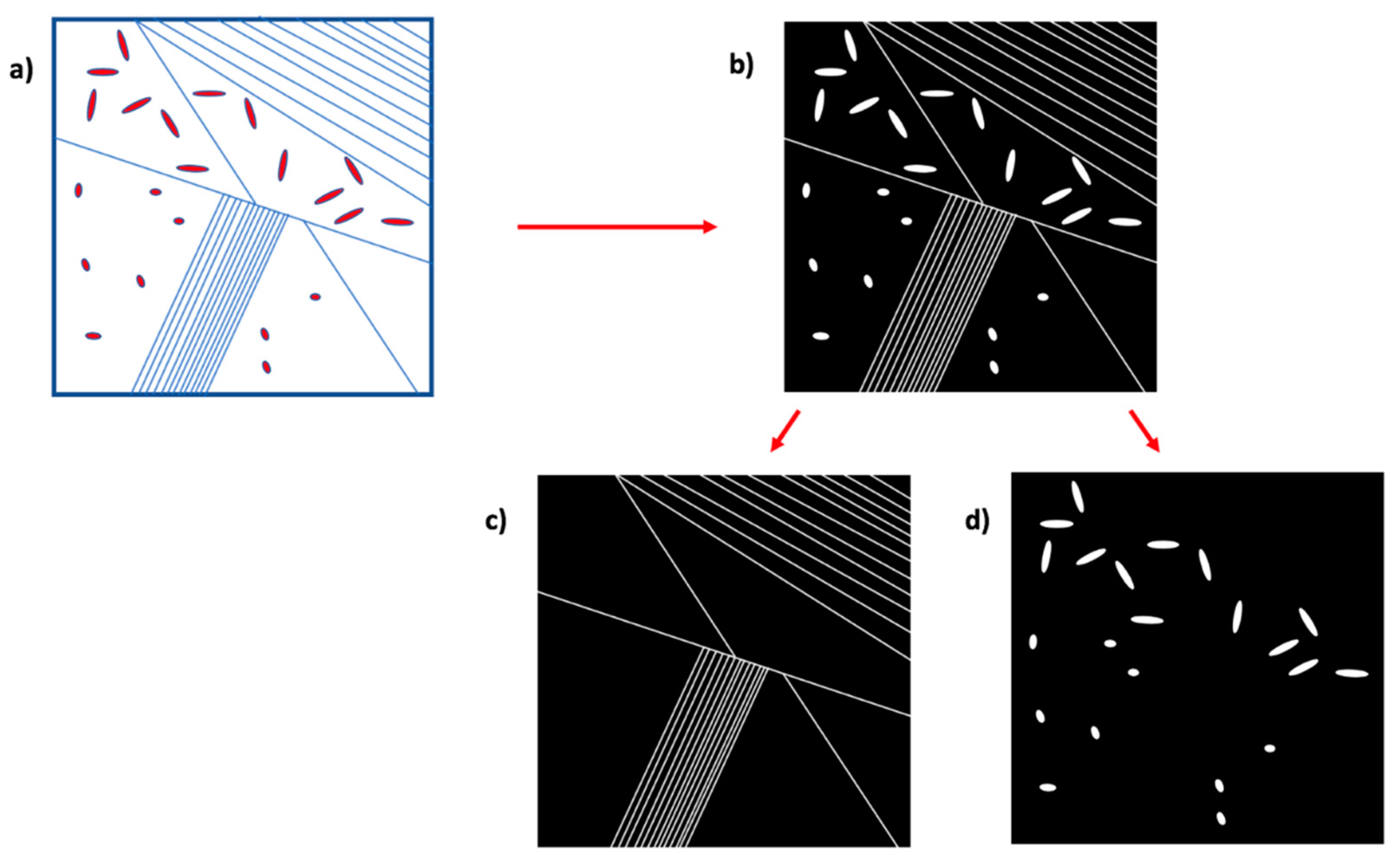
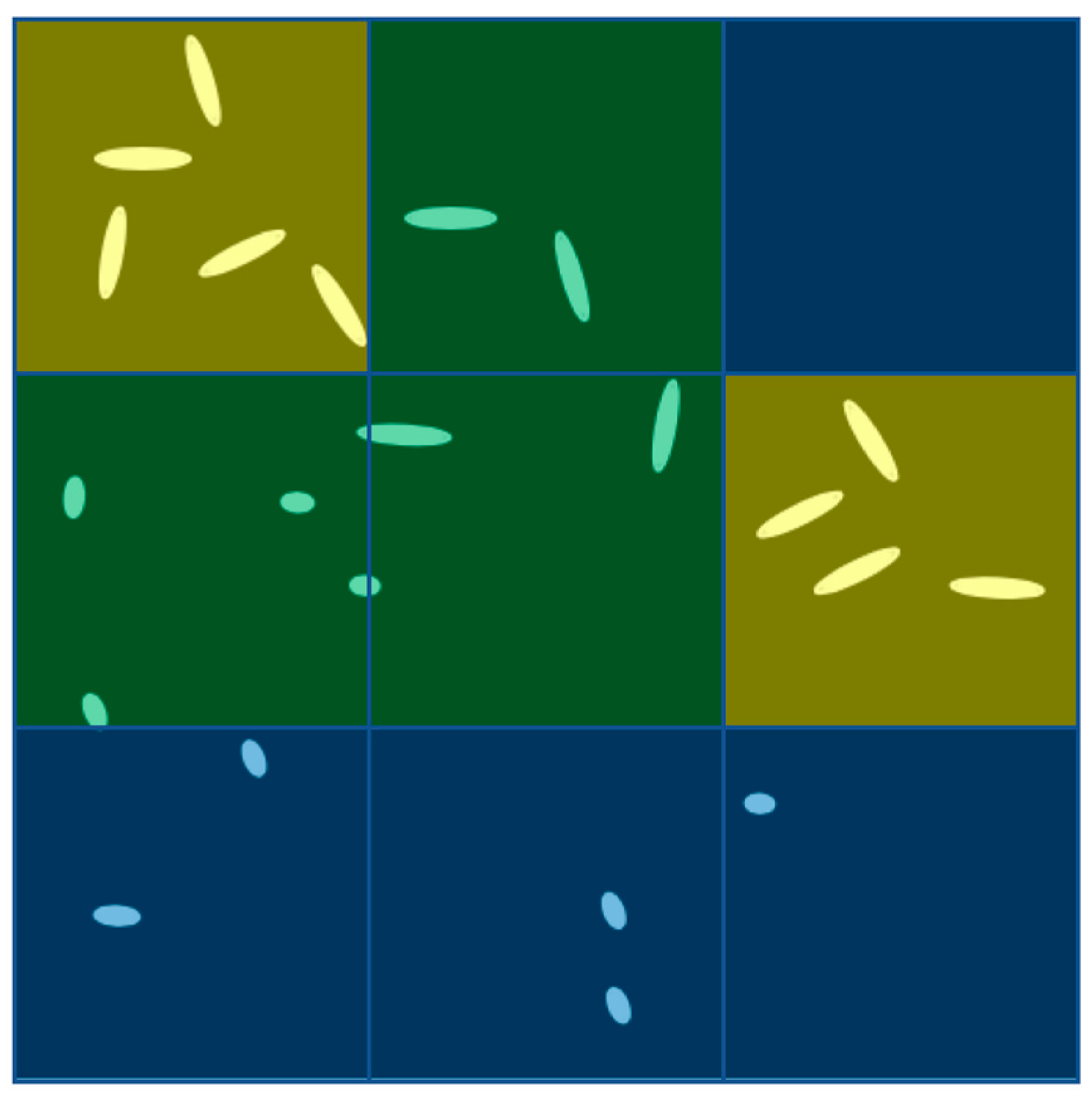
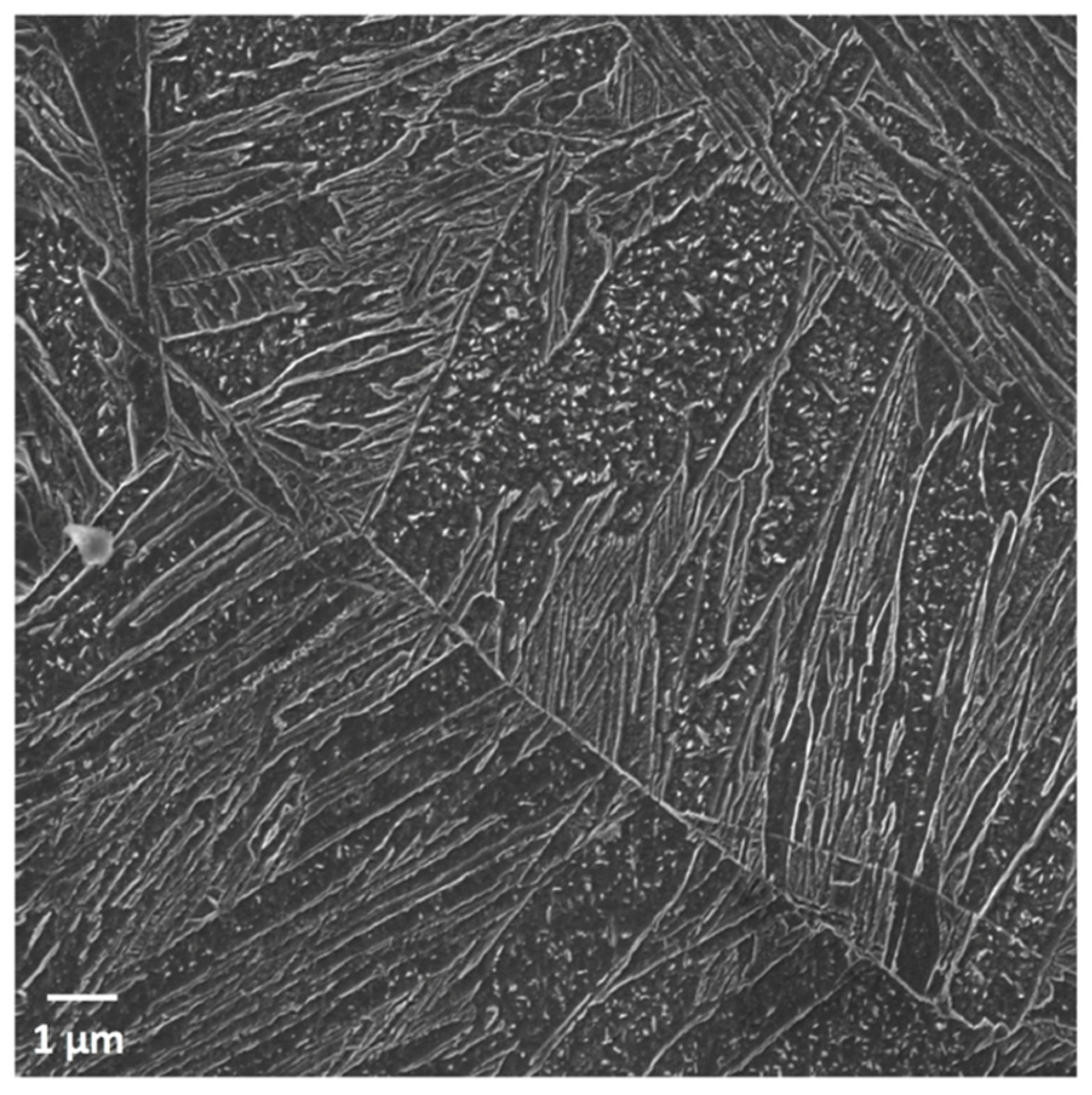

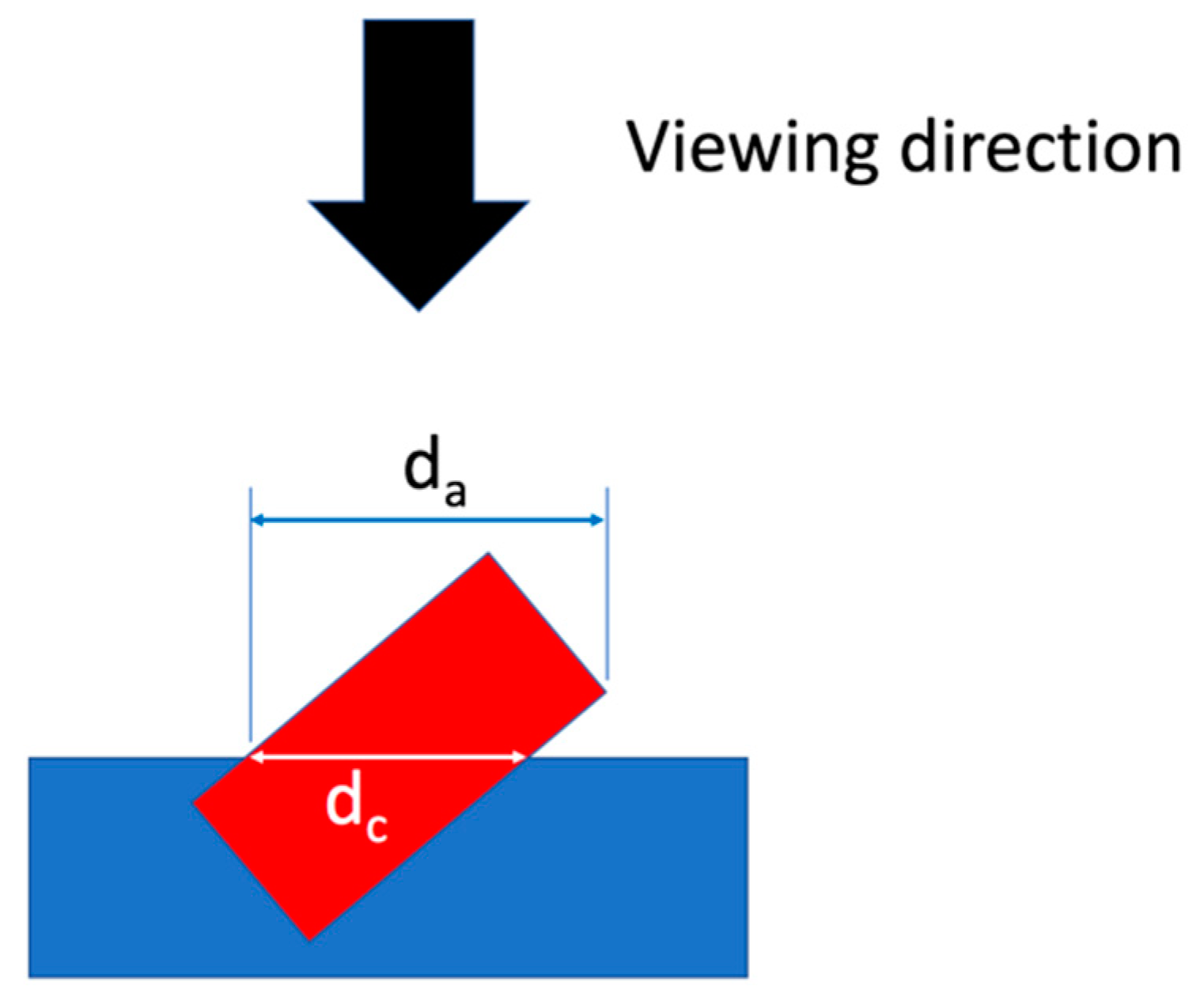
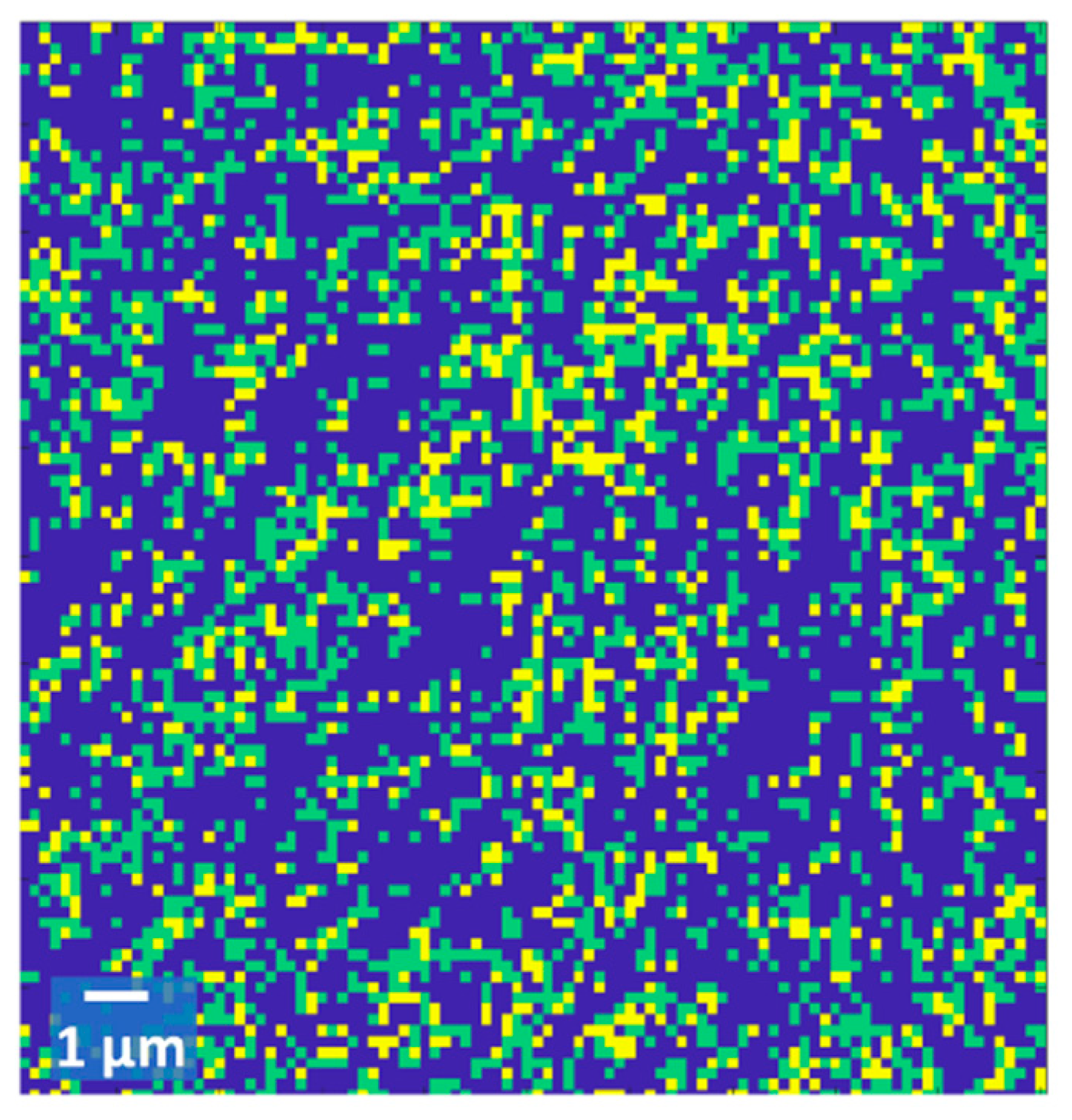
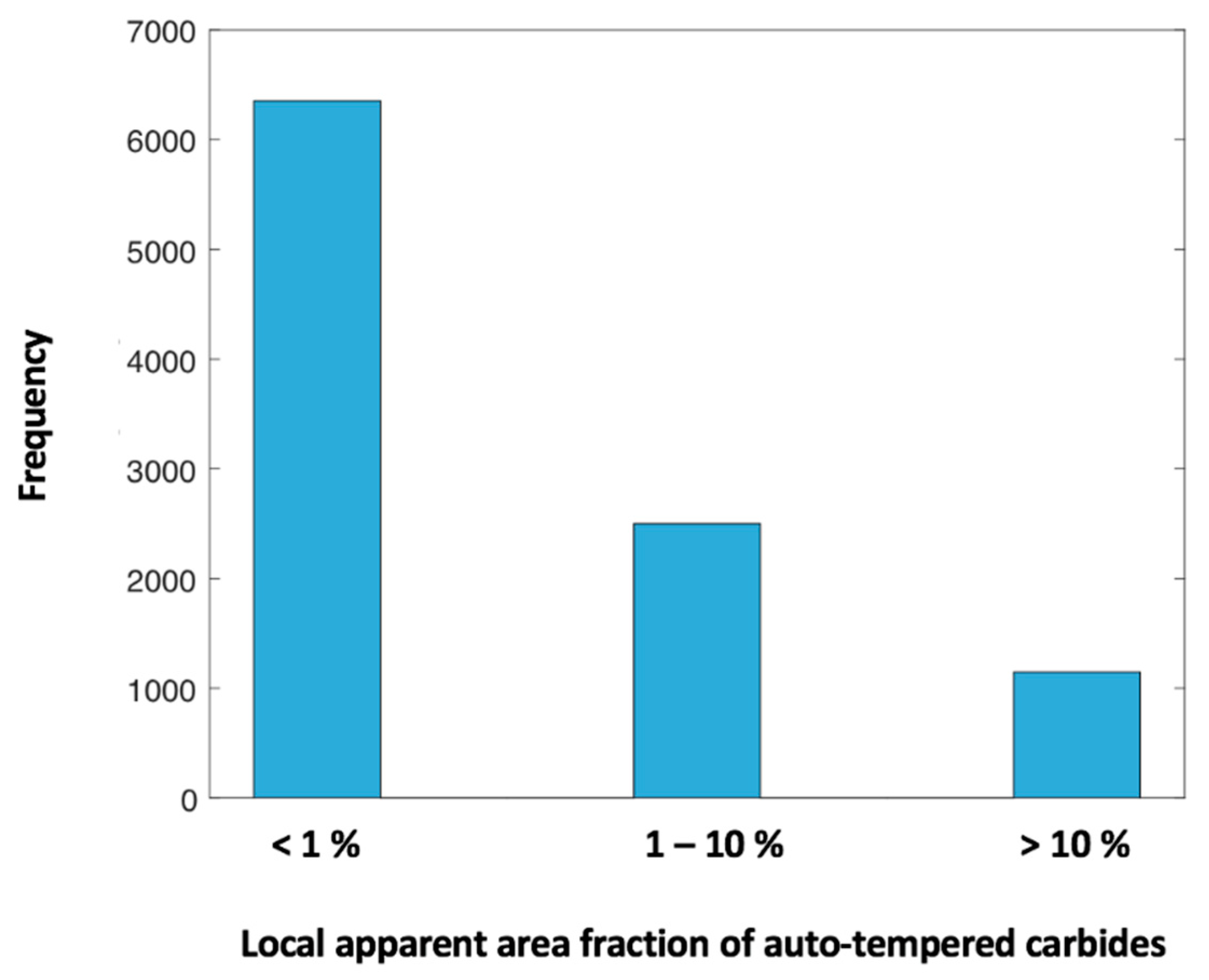
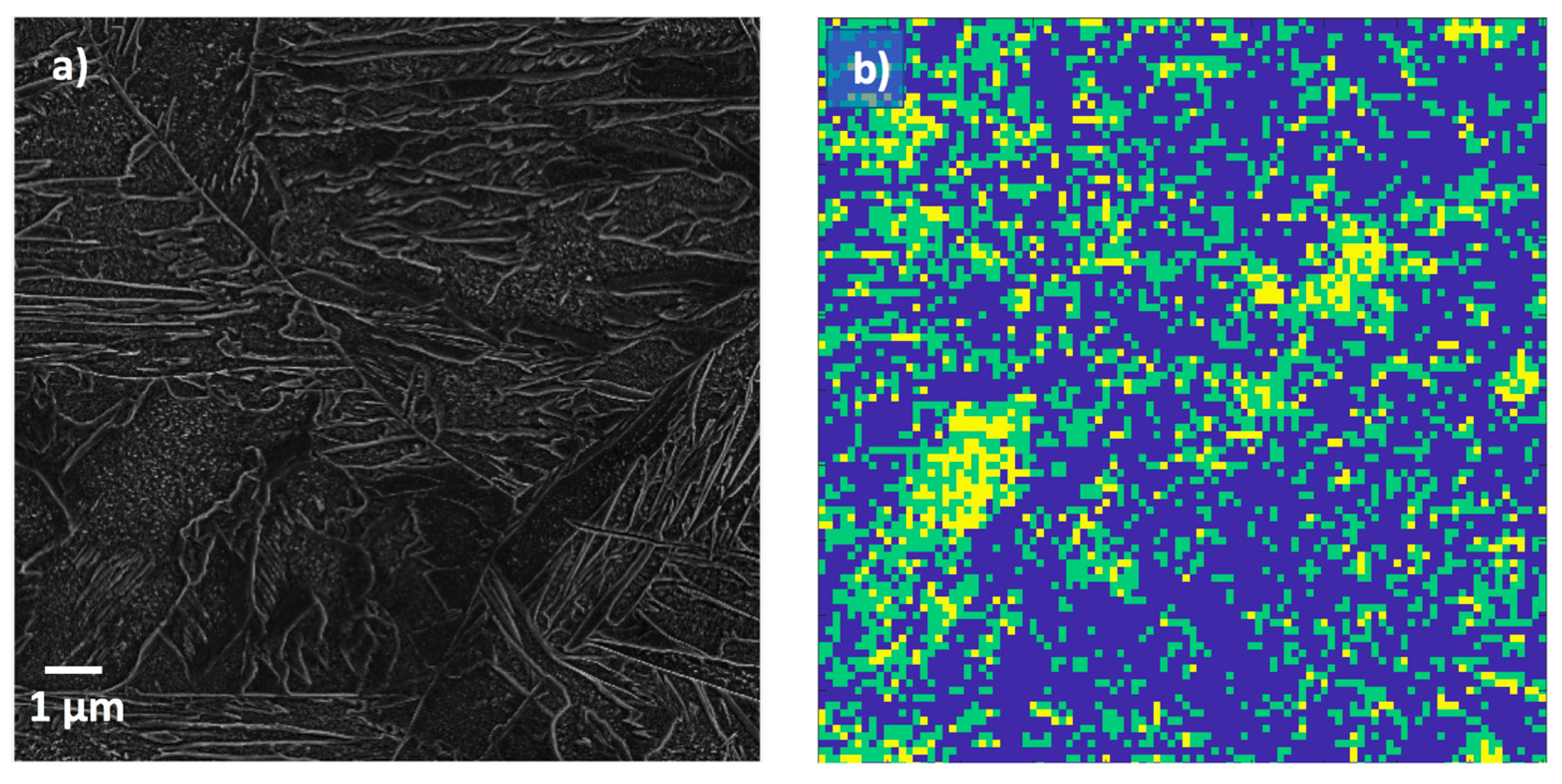
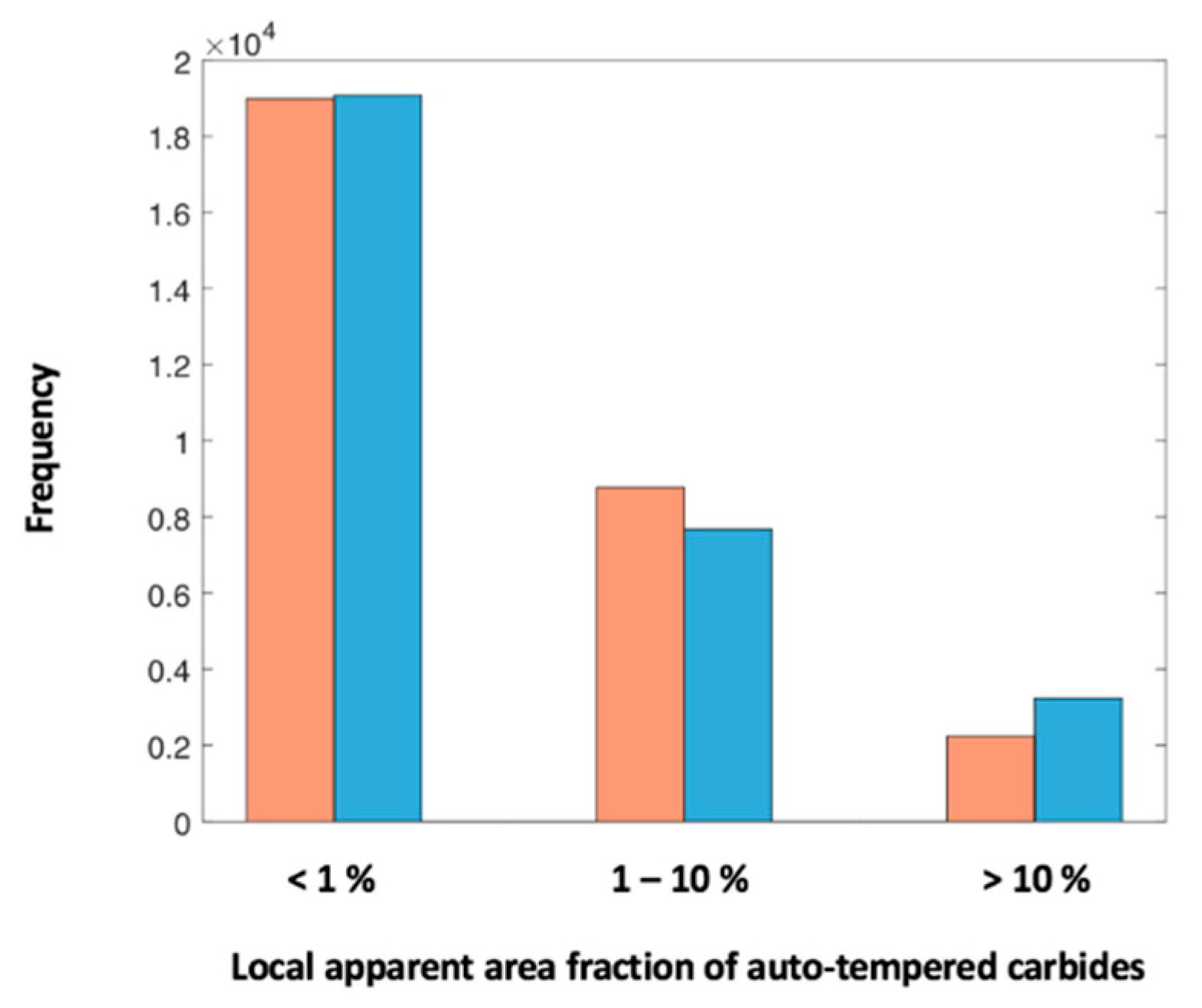
© 2020 by the authors. Licensee MDPI, Basel, Switzerland. This article is an open access article distributed under the terms and conditions of the Creative Commons Attribution (CC BY) license (http://creativecommons.org/licenses/by/4.0/).
Share and Cite
Ramesh Babu, S.; Davis, T.P.; Haas, T.; Jarvenpää, A.; Kömi, J.; Porter, D. Image Processing Tool Quantifying Auto-Tempered Carbides in As-Quenched Low Carbon Martensitic Steels. Metals 2020, 10, 171. https://doi.org/10.3390/met10020171
Ramesh Babu S, Davis TP, Haas T, Jarvenpää A, Kömi J, Porter D. Image Processing Tool Quantifying Auto-Tempered Carbides in As-Quenched Low Carbon Martensitic Steels. Metals. 2020; 10(2):171. https://doi.org/10.3390/met10020171
Chicago/Turabian StyleRamesh Babu, Shashank, Thomas Paul Davis, Tim Haas, Antti Jarvenpää, Jukka Kömi, and David Porter. 2020. "Image Processing Tool Quantifying Auto-Tempered Carbides in As-Quenched Low Carbon Martensitic Steels" Metals 10, no. 2: 171. https://doi.org/10.3390/met10020171
APA StyleRamesh Babu, S., Davis, T. P., Haas, T., Jarvenpää, A., Kömi, J., & Porter, D. (2020). Image Processing Tool Quantifying Auto-Tempered Carbides in As-Quenched Low Carbon Martensitic Steels. Metals, 10(2), 171. https://doi.org/10.3390/met10020171





